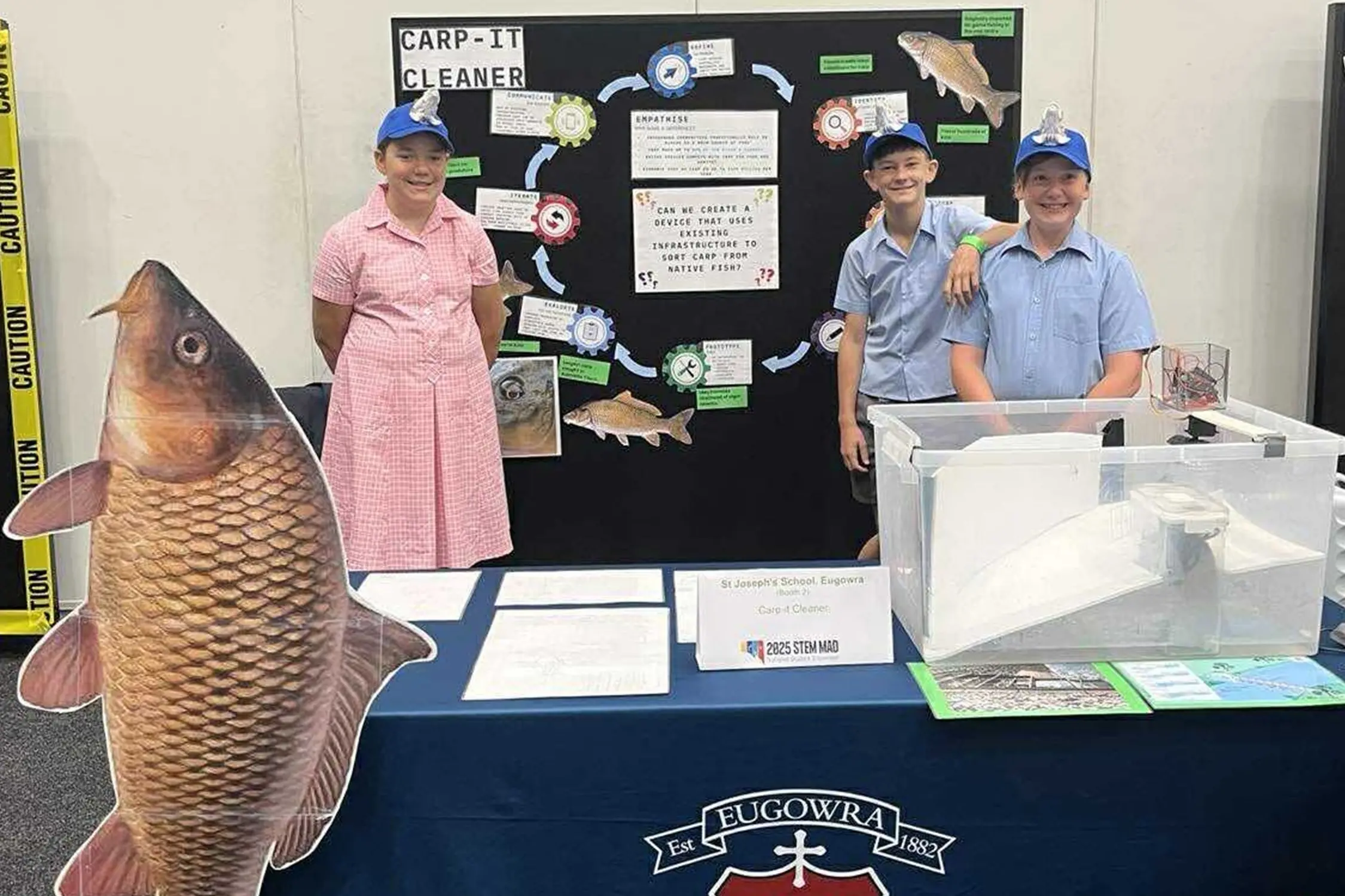PHOTO
55971.0
Can artificial intelligence help us draft out carp and allow native fish species to swim upstream to spawn?
After months of research and prototype development, a team of Year 5 and 6 students from St Joseph’s Catholic Primary School, Eugowra, took this very idea to the Catholic Network Australia’s annual STEM Make A Difference showcase.
With the support of Mrs Rosemary Townsend and Mrs Janice Mendham, students Taleesha, Sam and Zac investigated solutions to the invasive carp problem in local waterways.
Their project, the Carp-It Cleaner, aimed to detect and separate carp from native fish species.
Using computer learning technologies, a HuskyLens camera and Microbits, the students engineered a functional model that recognises fish characteristics and triggers a sorting mechanism.
In their project video, Taleesha explained the scale of the problem facing our waterways.
In some places, carp can make up 90 per cent of the river’s biomass, causing erosion in river banks, competing with native species for food, and muddying the waters.
“We wanted to create a device that would use existing infrastructure to sort carp from native species,” she said.
The team started by researching carp, noting the species was introduced to Australian waters in 1865, the adults have no natural predators and can lay up to two million eggs – up to four times more than our native species.
But all swim upstream for breeding and it’s here that students identified a potential way to slow down the carp number explosion.
They looked at locations along the Murray and photographed existing structures such as the carp cage at Blanchetown, South Australia, and the fishway at Torrumbarry Weir in Victoria.
“We decided that using existing infrastructure along the river will make our project more economical and easier to develop,” Sam said.
The team set out to work out how they could draft out carp from native fish, only allowing native fish back up through fish ladders or fishways where they are placed at weirs and dams.
“We all wanted to use the Huskylens to recognise the carp and turn the gate,” Sam said.
“So we needed to teach the Huskylens to identify carp over other fish in the river.
“The lens uses machine learning, which is a branch of artificial intelligence, to capture images of a carp at different angles, like facial recognition on your phone.”
Carp recognised by the Huskylens were funnelled into a trap or holding area, while the gate opened to allow native fish to continue upstream.
Zac said students trialled a couple of trap mechanisms and also fine-tuned their gate design before settling on the prototype they took to the national showcase.
They also added a drafting race to guide fish into the unit in a single file.
The result? A fairly simple design that added on to existing infrastructure.
Once trapped in the holding pond, carp could be processed into useful products like fertiliser, or animal feed, to help offset the costs of the program.
“It could be used in locations in rivers across Australia,” Zac said.
“Our device could certainly make a difference to communities who rely on the rivers of Australia and the native species who inhabit them.”
In Adelaide, the students confidently presented their design process, coding decisions and environmental aims to students, teachers and industry professionals.
Their Carp-It Cleaner earned the People’s Choice Award for Showcase 1.
St Joseph’s is incredibly proud of Zac, Sam and Taleesha for their innovation and congratulates them on their outstanding achievement at the national level.





